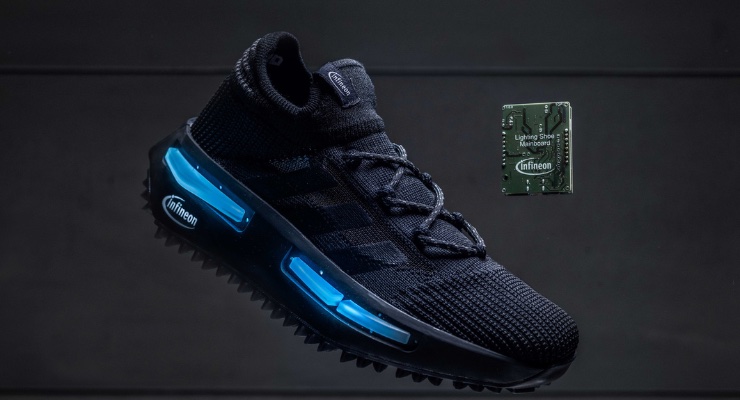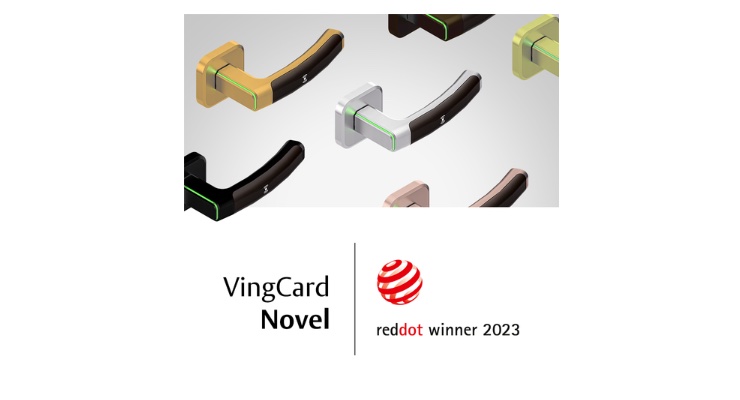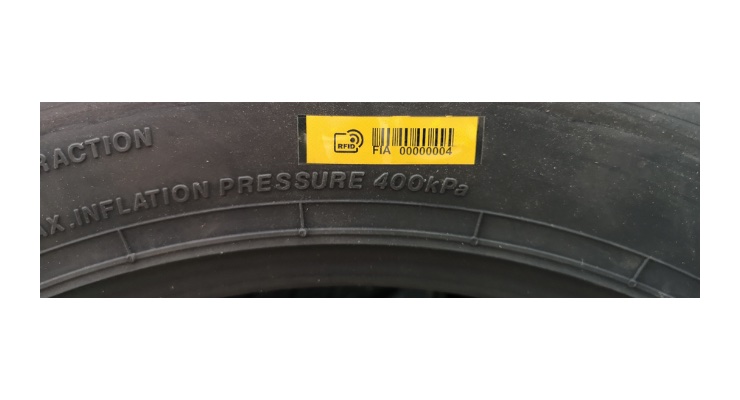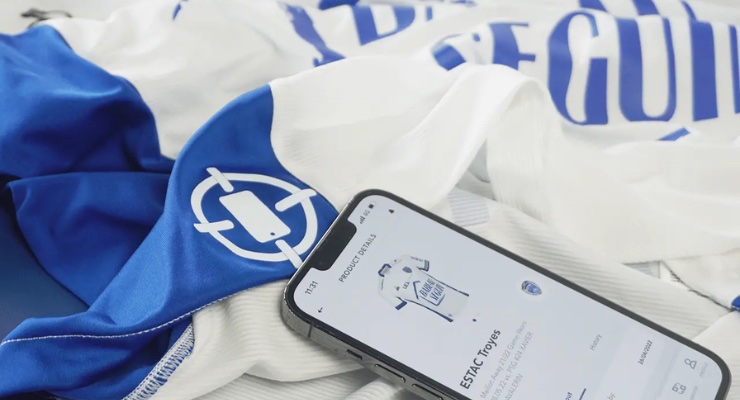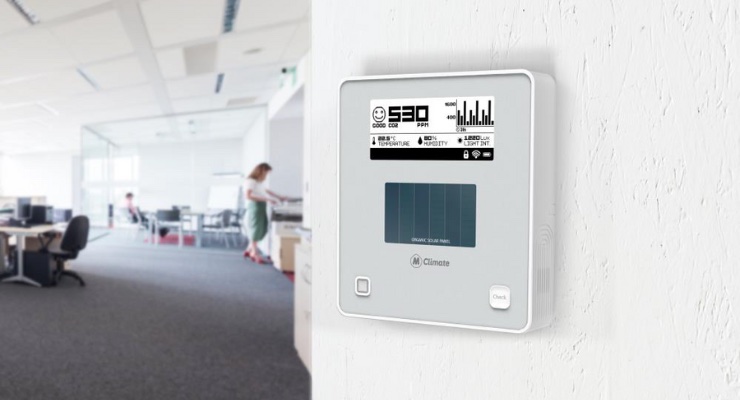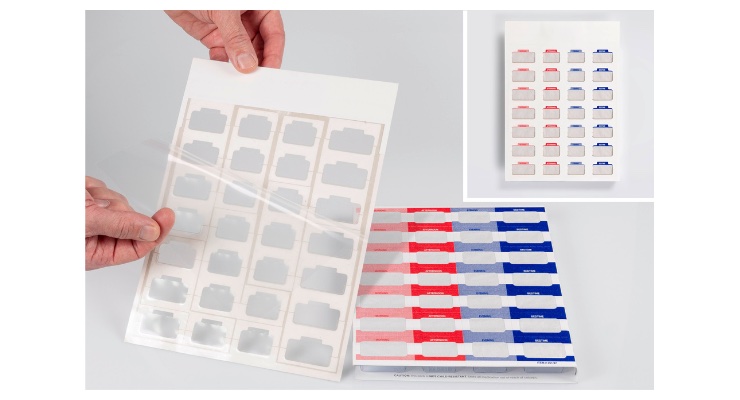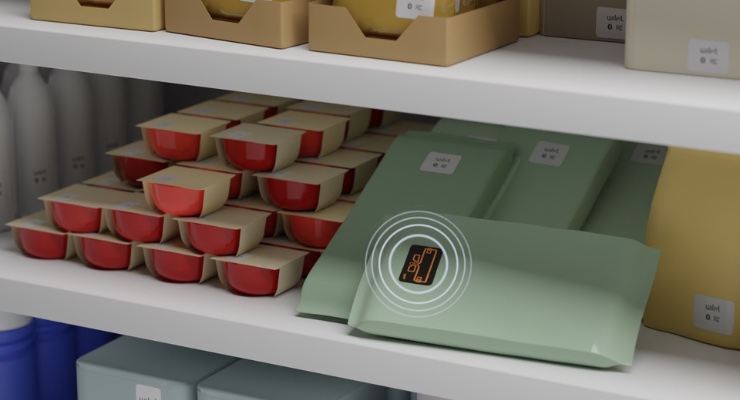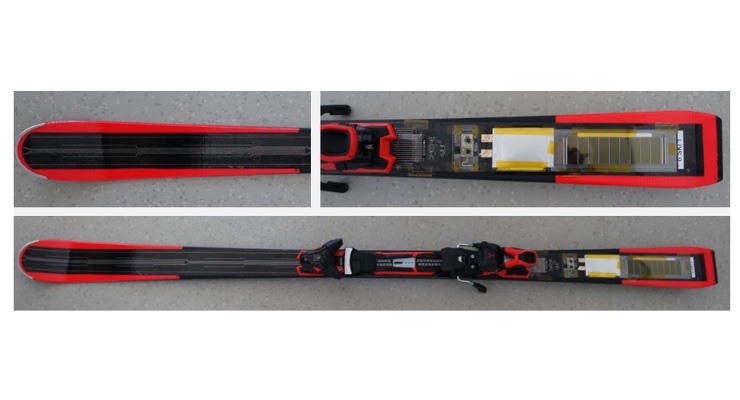The past 12 months has seen a flurry of new products featuring flexible and printed electronics reaching markets. Here, in alphabetical order, are some of the most interesting items we have seen in the last 12 months:
• VingCard Novel by ASSA ABLOY Global Solutions Adds New Functionalities to Hotel Door Locks
Nowadays, hotel and resort guests use room cards that are programmed at the front desk. Still, there are opportunities to add further functionalities to the card itself. ASSA ABLOY Global Solutions’ VingCard Novel electronic door lock solution adds further functionalities. Featuring a range of advanced capabilities, including RFID, NFC and digital key service compatibility, VingCard Novel also supports compatibility with room key in Apple Wallet. The VingCard Novel received a prestigious 2023 Red Dot Award in the Product Design category.
• Bridgestone Japan, Avery Dennison Partner on RFID for GT Racing Tires
The use of RFID for tires has been an exciting area of growth in recent years, beginning with RFID being used for logistics, production, inventory and recycling. Avery Dennison is making strides in the racing field with its Maxdura Tire Tag. First, Avery Denison announced in 2022 that it partnered with Bridgestone Japan for RFID for its Grand Touring (GT) Racing team. In 2023, Sumitomo Rubber Industries Motorsport Department selected the AD Maxdura Tire Tag to be used for endurance racing teams using its Falken tires. It seems certain that RFID will soon become more mainstream in typical passenger car tires.
• Canatu Adapts CNT to LiDAR Deicing
Working with Covestro, Canatu has adapted carbon nanotubes for Light Detection and Ranging (LiDAR) systems, which are critical to autonomous driving. Canatu’s film heater technology is used to de-ice the headlight lens, thus keeping the LiDAR clear of fog, snow and ice, enabling autonomous driving in any weather. Because it is wire-free, the laser has clear vision to map surroundings.
• Identiv, ES Troyes AC Bring NFC-Enabled Experience to Fans
Sports teams are finding that NFC and collectibles are an ideal match, as teams are using NFC to bring their fans specialized contents, including videos and special offers, while also proving authenticity. Identiv has found this to be a successful segment, utilizing collectID’s blockchain technology to bring new experiences to fans.
So far, Identiv has brought its technologies to a variety of teams including Atletico Madrid in La Liga, 1. FC Koln in the German Bundesliga, the Nashville Predators in the National Hockey League (NHL), among others. For French Ligue 1 football club ES Troyes AC, Identiv digitized its 2022-23 season jerseys, embedding Identiv’s NFC tags into the jersey. The tag gives Troyes fans the opportunity to unlock bonus features, including special promotions and giveaways and video highlights, as well as providing product authentication.
• Infineon Develops Infineon Lighting Shoe Prototype with adidas
adidas AG and Infineon Technologies AG have developed the Lighting Shoe. Utilizing high-end sensor technology, this intelligent adidas originals NMD S1 shoe senses music and beats from the environment and then reacts with different and programmable lighting effects, converting the audio information into colorful LED effects on the shoe.
• MClimate’s CO2 Display LoRaWAN Utilizes Epishine’s OPV Technology
Eliminating batteries from the waste stream would be a benefit to the environment, but you have to come up with an alternate source of power, especially for products that used indoors. MClimate’s CO2 Display LoRaWAN has done just that; its wireless carbon dioxide (CO2) display is powered by Epishine's indoor solar cell technology. Epishine produces its solar cells through roll-to-roll printed organic photovoltaics (OPV) to harvest ambient light in indoor settings.
• Schreiner MediPharm Improves Adherence with Its Smart Blister Card
Schreiner MediPharm recently developed its Smart Blister Card, which enables digital medication adherence monitoring. The Smart Blister Card utilizes conductive lines combined with an electronic unit. Once the patient pushes tablets out of a cavity, data is generated in real time. This includes the exact time the pill was removed, the cavity it came out of, and its dosage.
The data is stored in the Smart Blister Card and sent to a database, either by a smartphone app or reader using NFC or Bluetooth. This is beneficial to patients and their families as well as physicians and caregivers. The European Association of the Self-Adhesive Label Industry (FINAT) presented the Smart Blister Card with the award in the “Innovation & Electronic Printing – Electronic Devices” category in 2023.
• Smart Skis May Soon be Seen on the Slopes
We may be adding smart skis to the world of smart items in the near future. As a part of the European Union funded the EU Horizon 2020 project Smart2Go, ski specialist Atomic Austria collaborated with Joanneum Research and several other European partners, including University of Salzburg, Salzburg Research and the Red Bull Athlete Performance Center. The ski demonstrator is printed ferroelectric sensors, which were roll-to-roll printed on a 1.7 m long PET substrate and laminated onto the ski surface, and use organic photovoltaics for energy harvesting. The entire sensor (substrate 125 µm plus printed sensors 10 µm) is only 135 µm thick. The smart skis earned LOPEC 2023’s Best Publicly Funded Project Demonstrator award.
• With Its Ambient IoT, Wiliot Makes Inroads in IoT
The Internet of Things (IoT) offers the ability to track potentially billions of items, including perishables such as food and medicines, which can be monitored for safety and environmental conditions. Wiliot is moving ahead in the IoT segment through its ambient IoT Pixels and Wiliot Cloud platform. Its IoT Pixels are either powered by harvesting radio frequency energy or using a thin printed battery. All of the data is sent to the Wiliot Cloud, where users can process the information. The company recently placed an order for 25 million RFID tags from Identiv.
• VingCard Novel by ASSA ABLOY Global Solutions Adds New Functionalities to Hotel Door Locks
Nowadays, hotel and resort guests use room cards that are programmed at the front desk. Still, there are opportunities to add further functionalities to the card itself. ASSA ABLOY Global Solutions’ VingCard Novel electronic door lock solution adds further functionalities. Featuring a range of advanced capabilities, including RFID, NFC and digital key service compatibility, VingCard Novel also supports compatibility with room key in Apple Wallet. The VingCard Novel received a prestigious 2023 Red Dot Award in the Product Design category.
• Bridgestone Japan, Avery Dennison Partner on RFID for GT Racing Tires
The use of RFID for tires has been an exciting area of growth in recent years, beginning with RFID being used for logistics, production, inventory and recycling. Avery Dennison is making strides in the racing field with its Maxdura Tire Tag. First, Avery Denison announced in 2022 that it partnered with Bridgestone Japan for RFID for its Grand Touring (GT) Racing team. In 2023, Sumitomo Rubber Industries Motorsport Department selected the AD Maxdura Tire Tag to be used for endurance racing teams using its Falken tires. It seems certain that RFID will soon become more mainstream in typical passenger car tires.
• Canatu Adapts CNT to LiDAR Deicing
Working with Covestro, Canatu has adapted carbon nanotubes for Light Detection and Ranging (LiDAR) systems, which are critical to autonomous driving. Canatu’s film heater technology is used to de-ice the headlight lens, thus keeping the LiDAR clear of fog, snow and ice, enabling autonomous driving in any weather. Because it is wire-free, the laser has clear vision to map surroundings.
• Identiv, ES Troyes AC Bring NFC-Enabled Experience to Fans
Sports teams are finding that NFC and collectibles are an ideal match, as teams are using NFC to bring their fans specialized contents, including videos and special offers, while also proving authenticity. Identiv has found this to be a successful segment, utilizing collectID’s blockchain technology to bring new experiences to fans.
So far, Identiv has brought its technologies to a variety of teams including Atletico Madrid in La Liga, 1. FC Koln in the German Bundesliga, the Nashville Predators in the National Hockey League (NHL), among others. For French Ligue 1 football club ES Troyes AC, Identiv digitized its 2022-23 season jerseys, embedding Identiv’s NFC tags into the jersey. The tag gives Troyes fans the opportunity to unlock bonus features, including special promotions and giveaways and video highlights, as well as providing product authentication.
• Infineon Develops Infineon Lighting Shoe Prototype with adidas
adidas AG and Infineon Technologies AG have developed the Lighting Shoe. Utilizing high-end sensor technology, this intelligent adidas originals NMD S1 shoe senses music and beats from the environment and then reacts with different and programmable lighting effects, converting the audio information into colorful LED effects on the shoe.
• MClimate’s CO2 Display LoRaWAN Utilizes Epishine’s OPV Technology
Eliminating batteries from the waste stream would be a benefit to the environment, but you have to come up with an alternate source of power, especially for products that used indoors. MClimate’s CO2 Display LoRaWAN has done just that; its wireless carbon dioxide (CO2) display is powered by Epishine's indoor solar cell technology. Epishine produces its solar cells through roll-to-roll printed organic photovoltaics (OPV) to harvest ambient light in indoor settings.
• Schreiner MediPharm Improves Adherence with Its Smart Blister Card
Schreiner MediPharm recently developed its Smart Blister Card, which enables digital medication adherence monitoring. The Smart Blister Card utilizes conductive lines combined with an electronic unit. Once the patient pushes tablets out of a cavity, data is generated in real time. This includes the exact time the pill was removed, the cavity it came out of, and its dosage.
The data is stored in the Smart Blister Card and sent to a database, either by a smartphone app or reader using NFC or Bluetooth. This is beneficial to patients and their families as well as physicians and caregivers. The European Association of the Self-Adhesive Label Industry (FINAT) presented the Smart Blister Card with the award in the “Innovation & Electronic Printing – Electronic Devices” category in 2023.
• Smart Skis May Soon be Seen on the Slopes
We may be adding smart skis to the world of smart items in the near future. As a part of the European Union funded the EU Horizon 2020 project Smart2Go, ski specialist Atomic Austria collaborated with Joanneum Research and several other European partners, including University of Salzburg, Salzburg Research and the Red Bull Athlete Performance Center. The ski demonstrator is printed ferroelectric sensors, which were roll-to-roll printed on a 1.7 m long PET substrate and laminated onto the ski surface, and use organic photovoltaics for energy harvesting. The entire sensor (substrate 125 µm plus printed sensors 10 µm) is only 135 µm thick. The smart skis earned LOPEC 2023’s Best Publicly Funded Project Demonstrator award.
• With Its Ambient IoT, Wiliot Makes Inroads in IoT
The Internet of Things (IoT) offers the ability to track potentially billions of items, including perishables such as food and medicines, which can be monitored for safety and environmental conditions. Wiliot is moving ahead in the IoT segment through its ambient IoT Pixels and Wiliot Cloud platform. Its IoT Pixels are either powered by harvesting radio frequency energy or using a thin printed battery. All of the data is sent to the Wiliot Cloud, where users can process the information. The company recently placed an order for 25 million RFID tags from Identiv.


